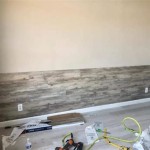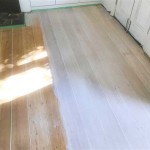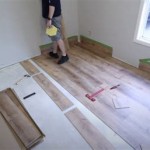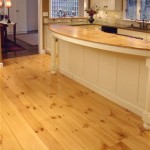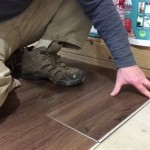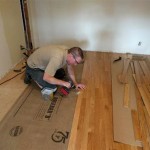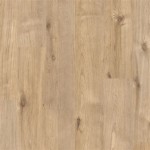How to Remove Carpet Glue From Hardwood Floors
Removing carpet glue from hardwood floors is a task that often requires patience and careful execution. Improper removal can damage the delicate surface of the wood, leading to costly repairs. This article provides a comprehensive guide to effectively and safely removing different types of carpet glue from hardwood floors, outlining the necessary tools, materials, and techniques.
Before commencing any removal process, it is crucial to identify the type of adhesive used. Some adhesives are water-based, while others are solvent-based, and their removal requires different approaches. Attempting to use the wrong removal technique can worsen the problem or cause permanent damage. Furthermore, the age and condition of the hardwood floor will influence the method chosen. Older floors may be more susceptible to damage and require gentler approaches.
Preparation is paramount. This includes protecting oneself with appropriate safety gear, such as gloves, eye protection, and a respirator, especially when using chemical solvents. Adequate ventilation is also critical to prevent the inhalation of harmful fumes. The workspace should be cleared of furniture and any loose debris. Prior to applying any chemical solutions to a large area, it is recommended to test a small, inconspicuous spot to assess the product's impact on the wood finish.
Tools and Materials Required
The following tools and materials are typically required for removing carpet glue from hardwood floors:
- Scraper (plastic and metal)
- Putty knife
- Heat gun or hair dryer
- Mineral spirits or adhesive remover
- Water and dish soap
- Soft cloths or rags
- Spray bottle
- Plastic sheeting
- Painter's tape
- Safety glasses
- Gloves
- Respirator (optional, but recommended)
- Floor buffer with appropriate pads (optional)
The specific tools and materials required may vary depending on the chosen removal method and the type of adhesive present. A plastic scraper is generally preferred initially to minimize the risk of scratching the hardwood surface. However, a metal scraper may be necessary for stubborn adhesive residues. Mineral spirits or commercially available adhesive removers are commonly used to dissolve the glue. A floor buffer can expedite the process and provide a smoother finish, but it requires careful handling to prevent damage.
Methods for Removing Carpet Glue
Several methods can be employed to remove carpet glue from hardwood floors, each with its own advantages and disadvantages. The selection of a method depends on factors such as the type of adhesive, the age of the glue, and the sensitivity of the hardwood flooring.
Heat Method
The heat method involves softening the adhesive with a heat gun or hair dryer, making it easier to scrape away. This method is generally effective for older, less stubborn adhesives. The heat source should be held approximately 6-8 inches away from the floor surface, moving it back and forth to avoid overheating any one spot. Overheating can damage the wood finish or even scorch the wood itself.
Once the glue has been softened, use a plastic scraper or putty knife to gently lift and remove the adhesive. Apply consistent pressure and avoid gouging the wood. Work in small sections to maintain control and prevent excessive force. Repeat the heating and scraping process as necessary until the majority of the adhesive has been removed. After removing the bulk of the glue, some residue may remain. This can often be addressed using other methods described below.
Solvent Method
The solvent method utilizes chemical solvents such as mineral spirits or commercially available adhesive removers to dissolve the glue. This method is typically more effective for stubborn or solvent-based adhesives. Before applying any solvent to the entire floor, test it in an inconspicuous area to ensure it does not damage the wood finish or cause discoloration.
Apply the solvent liberally to the adhesive residue using a soft cloth or spray bottle. Allow the solvent to dwell for the recommended time specified by the product manufacturer. This dwell time allows the solvent to penetrate and break down the adhesive bond. After the dwell time, use a plastic scraper or putty knife to gently remove the softened glue. As with the heat method, work in small sections and avoid excessive force.
It is essential to provide adequate ventilation when using chemical solvents. Open windows and doors to ensure proper airflow. Wear a respirator to avoid inhaling harmful fumes. Dispose of used rags and solvent-soaked materials properly in accordance with local regulations.
Water and Dish Soap Method
For water-based adhesives or for cleaning up residual glue after using other methods, a solution of warm water and dish soap can be effective. This method is less aggressive than using heat or solvents and is therefore safer for delicate hardwood floors. However, it may not be sufficient for removing large amounts of dried adhesive.
Mix a small amount of dish soap with warm water. Apply the solution to the adhesive residue using a soft cloth or spray bottle. Allow the solution to soak for a few minutes to soften the glue. Use a plastic scraper or putty knife to gently remove the softened adhesive. Wipe the area with a clean, damp cloth to remove any soap residue. Repeat as necessary until the glue is removed.
It is important to avoid excessive water exposure, as this can damage hardwood floors. Wipe up any spills immediately and ensure the floor is thoroughly dry after cleaning.
Addressing Stubborn Glue Residue
Even after employing the methods described above, some stubborn glue residue may persist. Several additional techniques can be used to address these remaining deposits.
Floor Buffer
A floor buffer equipped with appropriate pads can be used to gently buff away residual glue. Start with a fine-grit pad and gradually increase the grit as needed. Be careful not to apply too much pressure or buff for too long in one spot, as this can damage the wood finish. Regularly inspect the pad and clean it as necessary to prevent the buildup of adhesive residue.
Razor Scraper
A razor scraper can be used to carefully remove small amounts of stubborn glue. Hold the scraper at a shallow angle to the floor and gently scrape away the adhesive. Avoid applying too much pressure, as this can scratch the wood. Replace the blade frequently to ensure a sharp edge.
Repeat Application of Solvent
For particularly stubborn adhesive, repeat the application of solvent multiple times, allowing ample dwell time between applications. This can help to further break down the adhesive bond and make it easier to remove.
Post-Removal Care
After removing the carpet glue, it is essential to properly clean and protect the hardwood floor. Clean the floor with a wood floor cleaner to remove any remaining residue or solvent. Apply a coat of wood floor polish or wax to restore the shine and protect the finish. Allow the floor to dry completely before replacing furniture or heavy objects.
Inspect the floor for any damage, such as scratches or gouges. Repair any damage promptly to prevent further deterioration. Consider refinishing the floor if it is extensively damaged or if the finish is worn. Refinishing will provide a fresh, uniform surface and protect the wood from future damage.
Preventative measures can also be taken to minimize the likelihood of future adhesive problems. When installing new flooring, choose adhesives that are specifically designed for hardwood floors and that are easy to remove. Avoid using excessive amounts of adhesive and follow the manufacturer's instructions carefully. Regular cleaning and maintenance will help to keep the floor in good condition and prevent the buildup of dirt and grime.
Removing carpet glue from hardwood floors can be a challenging task, but with the right tools, materials, and techniques, it can be accomplished successfully. Patience and careful execution are key to preserving the beauty and integrity of the hardwood flooring. By following the steps outlined in this article, one can effectively remove carpet glue and restore the hardwood floor to its former glory.

Removing Glue Or Adhesive From Hardwood Floors The Speckled Goat

Flooring How Can I Remove Carpet Adhesive From Hardwood Floors Home Improvement Stack Exchange

How To Remove Carpet Glue From Hardwood Floors Servicewhale

Removing Glue Or Adhesive From Hardwood Floors The Speckled Goat

How To Remove Carpet Glue Goo Gone

How To Remove Carpet Glue And Floor Adhesive View Our Tips

3 Fast Easy Ways To Remove Carpet Glue From A Wood Floor

How To Remove Glue From Wood Floors Pete S

How To Remove Carpet Glue From Wood Concrete Floors Ultimate Diy Guide

Removing Glue Or Adhesive From Hardwood Floors The Speckled Goat
See Also
